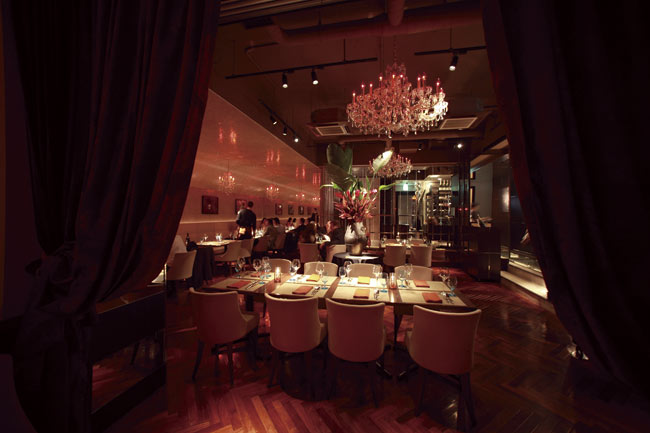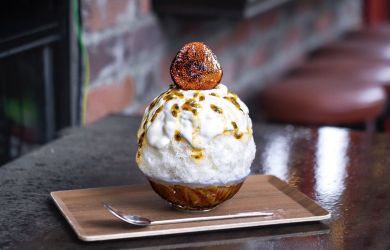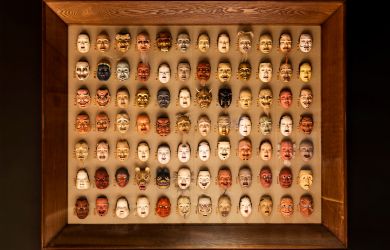
Originally published on metropolis.co.jp on September 2009

Photos by Taro Irei
Longtime troopers on the Tokyo culinary scene, Kevin Connell and Carl Bastian play a deft hand at their glamorous new space just off Kotto Dori in Aoyama. The mélange of punchy ingredients is a respectful ode to the pungent, colorful and, indeed, exotic cuisine of the Pied-Noir. Their new gig is known as KaMu.
The Pied-Noir were immigrants who left France for what were, at the time, perceived as mysterious lands. They traveled to Morocco, Algeria and other West African attenuations of the French empire before returning with newfound fashions, goods and cuisines to Marseille and other southern French ports and hubs.
In essence, the cooking is bold and unlike anything else in Tokyo. What’s more, KaMu boasts a wine list judiciously designed to complement the food and reflect the Mediterranean lands of the Pied-Noir, rather than to tick boxes or, like so many lists in town, please the layman with dreary mainstream selections. Wine programs like KaMu’s offer real value. Domaine de la Bouissière Gigondas (¥9,000) with the lamb? Yes please! Scented piney Languedocienne rosé from Terre du Sud (¥3,200) as an apero? OK! For me, these are good enough reasons to go.
Even better, the food is visceral, cooked with flair, and offers excellent value. This is as it should be, whether eating grilled sheep heads in Marrakech or slurping bouillabaisse in Marseille. Pied-Noir is a bastardized cuisine of many origins redolent with color, spice and aroma. While demanding respect because of the sheer joy it brings, it does not feign pretence. The cooking relies heavily on staples, including grains like faro, chickpeas, olives, and meats like gelatinous lamb, moist chicken and, to be sure, rabbit and goat that have been tempered by low heat and long cooking. Such meats are punctuated by emphatic flavors derived from anise, marjoram, garlic, saffron, cardamom and cloves, among other ingredients, infused or liberally dashed across the dish and cooled with saline notes from sardines, yoghurts, mint and almond.
While Connell has not worked with goat—yet—his braised lamb shoulder with chickpea ragout exemplifies the cuisine’s soul; similarly, the beef cheek with tapenade also benefits from patient cooking. Other dishes, including sardines with a sweet and sour preserved lemon jam lifted by a piquant pepper risotto, and the soothing yoghurt and garlic soup, offset the hefty dishes intelligently. The baklava with harissa-infused honey offers a deft blend of sweetness, crunch and spice. Bravo!
One does not leave KaMu feeling the day’s angst and one’s own girth around the ankles, but rather as if numerous jolts of flavor have been administered and tempered with a multitude of textures. This is a fluid, dynamic restaurant whose menus appear to change as often as its fortunes. My first visit saw me surrounded by bottles in a near-empty dining room. Mind you, the venue had just opened and Connell’s almond-garlic soup was tempered with too many almonds and not enough garlic. On my next visit, I was beaming. The soup had been honed to a more viscous and flavorful consistency thanks to the addition of marjoram and more garlic. Moreover, the joint was packed and the wine was flowing!
It is not often in this economic clime that quality can be found at these prices: in the evening, ¥1,100 for first courses and ¥1,800-¥2,300 for mains; at lunch, two dishes for ¥1,400. Mark-ups on the eclectic choice of wines are marginal.



①_Panoramic-ViewDay1-Medium-390x250.jpeg)
-390x250.jpg)



